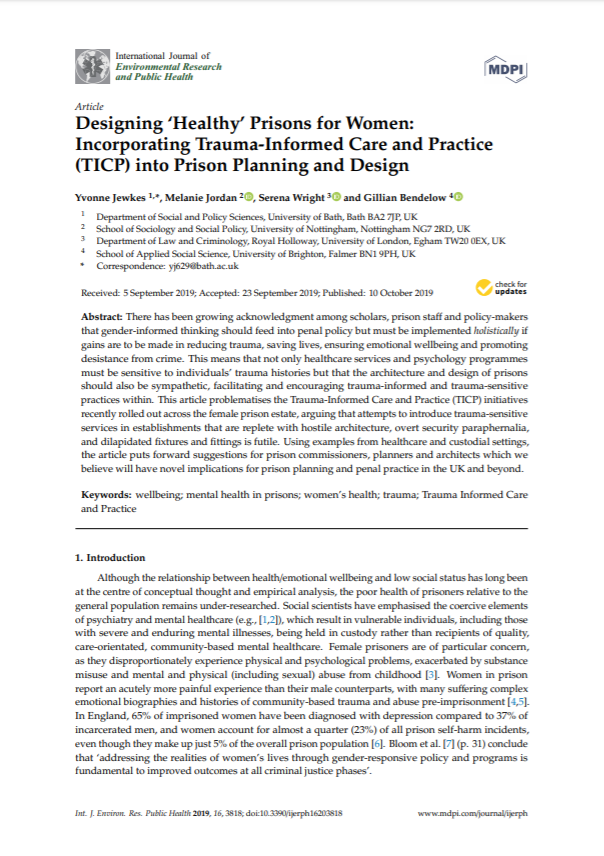There has been growing acknowledgment among scholars, prison staff, and policy-makers that gender-informed thinking should feed into penal policy but must be implemented holistically if gains are to be made in reducing trauma, saving lives, ensuring emotional wellbeing, and promoting desistance from crime. This means that not only healthcare services and psychology programs must be sensitive to individuals’ trauma histories but that the architecture and design of prisons should also be sympathetic, facilitating, and encouraging trauma-informed and trauma-sensitive practices within. This article problematizes the Trauma-Informed Care and Practice (TICP) initiatives recently rolled out across the female prison estate, arguing that attempts to introduce trauma-sensitive services in establishments that are replete with hostile architecture, overt security paraphernalia, and dilapidated fixtures and fittings is futile. Using examples from healthcare and custodial settings, the article puts forward suggestions for prison commissioners, planners, and architects which the authors believe will have novel implications for prison planning and penal practice in the UK and beyond.

